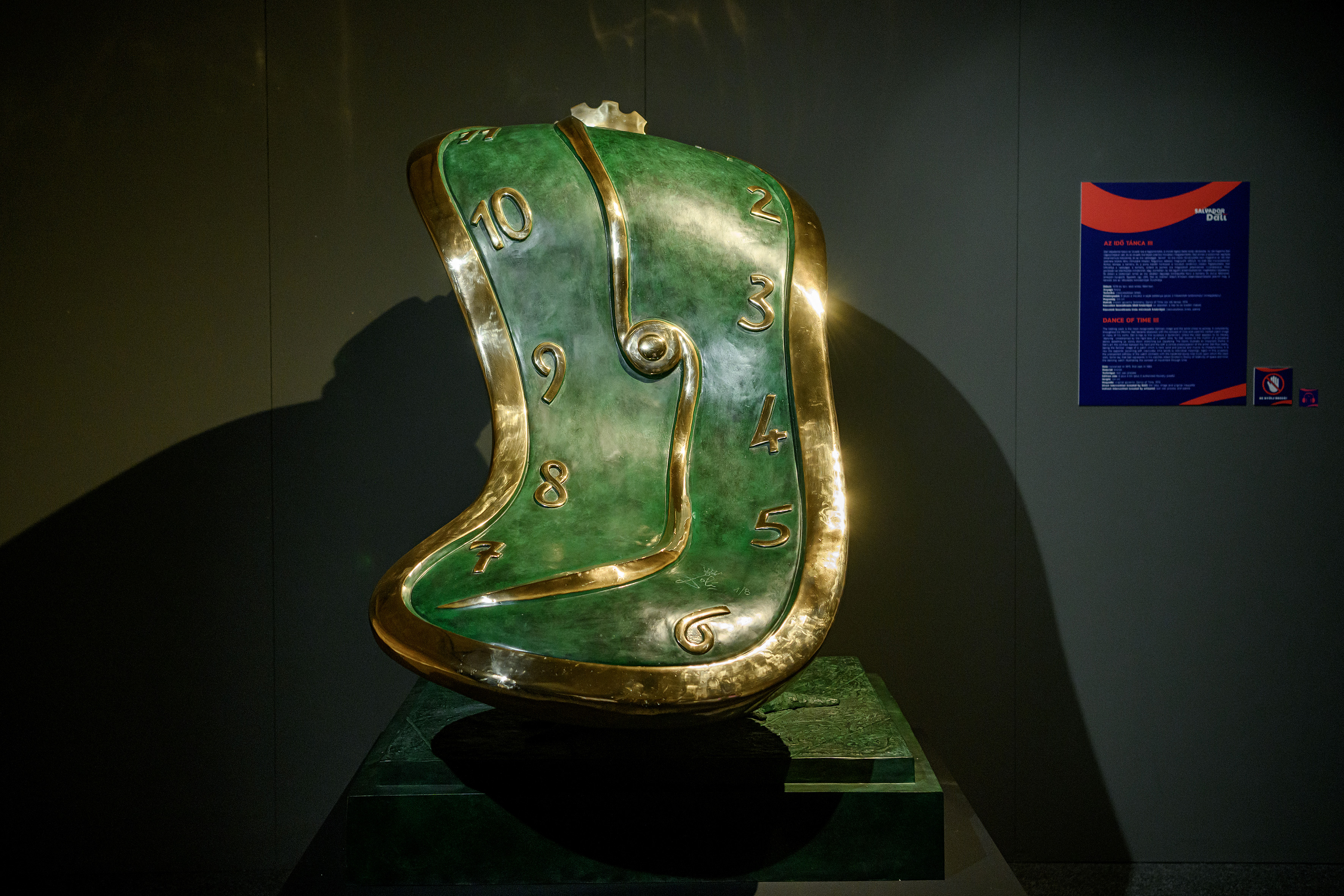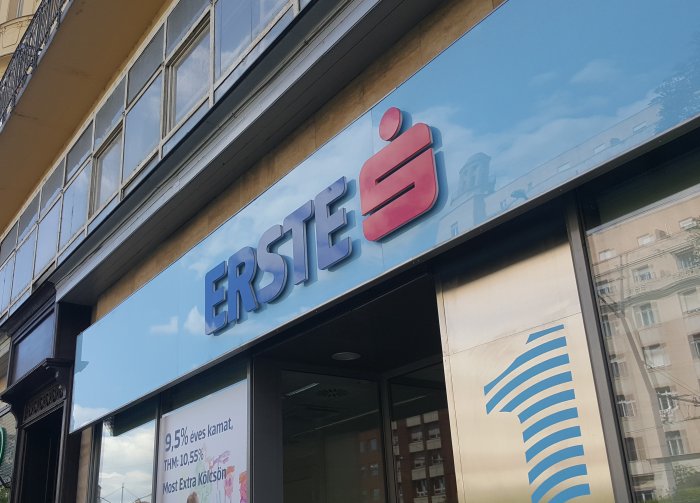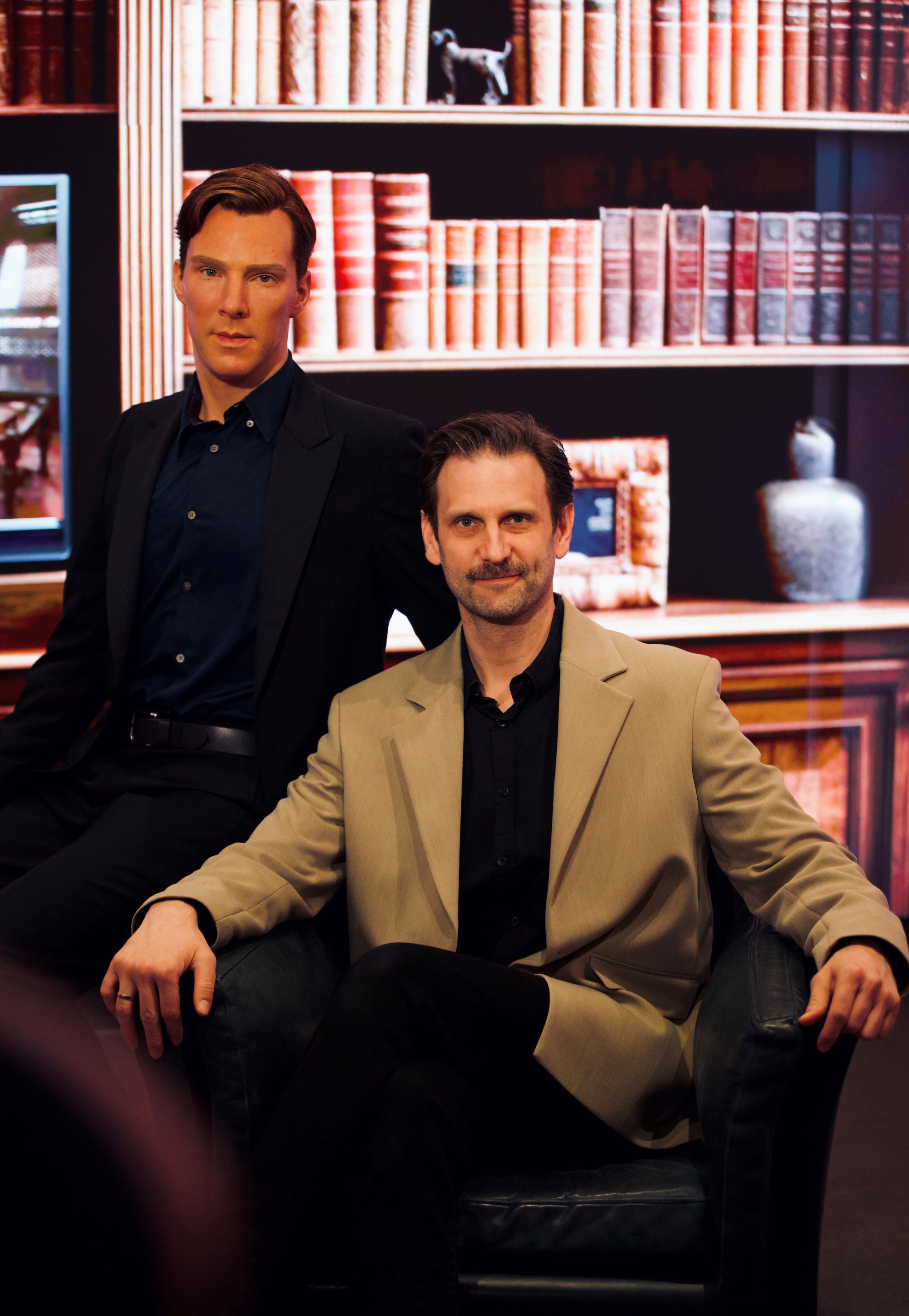Salvador Dalí in Budapest: Limitless or Uninspired?

Salvador Dalí professed to be delighted when his work or behavior provoked a powerful response. It didn’t matter whether it was for or against. When my Hungarian partner decided we should visit the Salvador Dalí exhibition at the exhibition space at Király Komplex (26 Király utca), I agreed because I hoped finally to make my mind up about him.
Today, when we think of Surrealism, we think of Dalí and his instantly recognizable imagery of meticulously painted but juxtaposed, transformed, and deformed everyday objects placed in dreamlike landscapes.
My feelings about Dalí have always been divided rather than strong. I dislike his “The Persistence of Memory,” the floppy clock painting, simply because, when I was at university in the early 1980s, posters of it were everywhere.
On the other hand, I’ve always admired Dalí the astonishingly prolific hustler, who would put his name to anything if he thought it would make money. He was so unashamedly greedy that, in 1949, the father of Surrealism, André Breton, anagrammed him “Avida Dollars.” In 1969, at the height of his fame, Dalí designed the logo for Chupa Chups, the Spanish lollipop brand.
Dalí may have also been the originator of the famous artist’s trick of signing or doodling on the back of a check, knowing that whoever had it would keep it for its potential value rather than cash it. He would also sign blank pages, ready for anyone to put whatever they wanted on them. Voila, instant Dalí!
According to the United Kingdom’s The Telegraph news website, Dalí once sold a blade of grass to Yoko Ono for USD 10,000. Dalí muse, model, actress, and disco artiste Amanda Lear claimed that Ono had asked Dalí to sell him a hair from his mustache.
“Dali thought that Yoko Ono was a witch and might use it in a spell,” Lear said. “He didn’t want to send her a personal item, much less one of his hairs. So, he sent me to the garden to find a dry blade of grass and send it off in a nice presentation box. The idiot paid 10,000 dollars for it. It amused him to rip people off.”
Artistic Hustler
Given that Dalí was the consummate artistic hustler, it’s fitting that at HUF 5,000 (more on weekends), the cost of entry to the exhibition is not cheap. My partner pointed out this is what you might generally expect to pay to see an art show in Budapest. I could cheerfully have walked away, but she, more favorably disposed to Dalí, insisted on going in.
With at least 150 exhibits, the exhibition, called “Dalí the Limitless,” claims to be the most comprehensive of his work in Hungary to date. My partner, however, disputes this. She remembers a fantastic 1988 exhibition with far more pieces, including his best-known Surrealist paintings.
This exhibition is based on a private collection of lesser-known works from the Dalí Universe in Paris. The organization’s founder, Beniamino Levi, worked with Dalí from the 1960s until the artist died in 1989. Today, the Universe claims to have “one of the world’s most significant collections of Dalí sculpture and three-dimensional artworks.”
Among other things, Levi encouraged Dalí to make more sculptures. On display in Budapest are these executed in glass paste (an ancient Egyptian method of glass casting revived by French glassmakers Daum in 1906), bronze, and gold.
“Motherhood” and “Guitar” are made from glass paste. The bronze sculptures include “Dance of Time III,” featuring that floppy clock, as well as “The Snail and the Angel” and “The Surrealist Angel.”
As I understand it, the sculptures were not made by Dalí. Rather, they’re based on originals devised by him, his models, and his ideas. Dalí used gold to make coins featuring the portrait of his equally avaricious muse and wife, Gala.
Gift Shop Sculpture
I was reminded of dear old Gala when I trailed after my partner into the exhibition store. As you’d expect, there are the usual branded mugs, pencils, fridge magnets and postcards. But you can also buy large sculptures for the home for millions of forints. My partner, of course, immediately wanted one. I wonder how many they’ve sold.
When it came to exploiting the Dalí name and building the brand, Gala, too, was no slouch. In the early 1980s, I remember visiting a nightclub somewhere in the hills on the border between France and Spain to which she’d given her name. In the center of the club, there was a swimming pool. After a swim, you could dry yourself using a towel bearing Dalí’s signature. How I wish I’d waltzed off with one.
Sadly, this exhibition doesn’t include any of the best-known paintings that made Dalí’s name, including that floppy clock. Mind you, if my memory serves me correctly, the original is much smaller and less impressive than you’d imagine. It’s only around nine inches by 16 (22.8 cm by 33 cm).
Instead of those famous paintings, there are holographic installations and projections of images onto walls. These are impressively tacky, and that’s about it. Piano music plays constantly. My partner believed this was connected to a painting by Dalí that depicts a piano in a tree. She also thought she recognized the music and asked an assistant what it was.
“It’s music from a Legoland exhibition that we used again,” she was told. Somewhere, the spirit of Dalí twirls that famous mustache, raises an eyebrow and chuckles.
The last thing before you hit the shop is a VR display that aims to put the viewer inside Dalí’s imagination. This my partner loved. She saw it twice. As for me, I’m still undecided on Dalí.
The exhibition at Király utca 26 runs until June 30. Visit www.dalikiallitas.hu for more information.
This article was first published in the Budapest Business Journal print issue of April 21, 2023.
SUPPORT THE BUDAPEST BUSINESS JOURNAL
Producing journalism that is worthy of the name is a costly business. For 27 years, the publishers, editors and reporters of the Budapest Business Journal have striven to bring you business news that works, information that you can trust, that is factual, accurate and presented without fear or favor.
Newspaper organizations across the globe have struggled to find a business model that allows them to continue to excel, without compromising their ability to perform. Most recently, some have experimented with the idea of involving their most important stakeholders, their readers.
We would like to offer that same opportunity to our readers. We would like to invite you to help us deliver the quality business journalism you require. Hit our Support the BBJ button and you can choose the how much and how often you send us your contributions.










